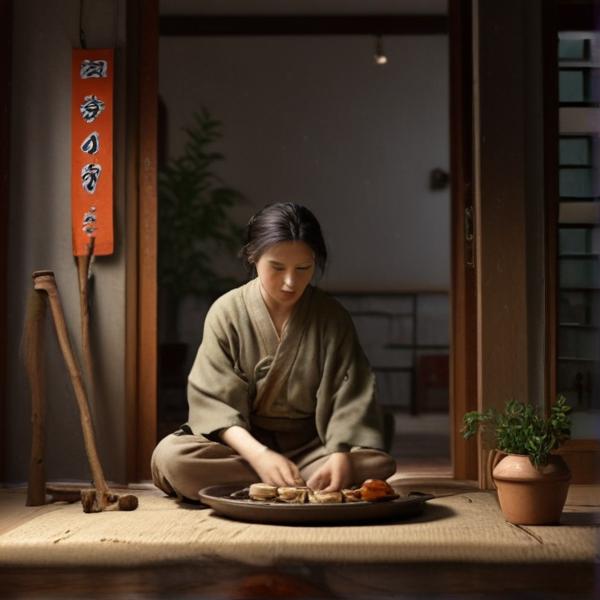基本信息 (Basic Information)
含义与用法 (Meanings & Usage)
中文核心释义 (Core Chinese Meaning): 一种柑橘类水果,通常指甘橘或称为蜜橘、小橘。
英文核心释义 (Core English Meaning): A type of citrus fruit, generally refers to mandarin orange or tangerine.
象形意义 / 为何这么写 (Pictographic Meaning / Writing Rationale)
文言文释义 (Classical Chinese Meaning)
与现代意义相近,亦指柑橘类水果,或作贡品、象征吉祥之物。Similar to modern meaning, also referred to citrus fruits, sometimes used as tribute items or as symbols of good fortune.
深入学习 (In-depth Study)
字源故事 (Origin Story)
字形演变 (Character Evolution)
常用词语和例句 (Common Words & Examples)
柑橘 (citrus fruits (including oranges and tangerines))
中国南方盛产柑橘。
Eng: Southern China is famous for producing citrus fruits.
柑子 (mandarin orange)
冬天吃新鲜的柑子很有味道。
Eng: It's delightful to eat fresh mandarin oranges in winter.
相关成语 (Related Idioms)
相关成语信息待补充。Related idiom information pending.
多语言翻译 (核心释义) (Translations (Core Meaning))
- French: mandarine (fruit), agrume
- German: Mandarine, Zitrusfrucht
- Spanish: mandarina, fruta cítrica
- Italian: mandarino, agrume
- Portuguese: tangerina, fruta cítrica
- Russian: мандарин (фрукт), цитрус
- Arabic: يوسفي، ثمرة حمضية
- Persian: نارنگی، مرکبات
- Dutch: mandarijn, citrusvrucht
- Polish: mandarynka, owoc cytrusowy
- Vietnamese: quýt, trái cây họ cam
- Ukrainian: мандарин (фрукт), цитрус
视频学习资源 (Video Learning Resources)
通过以下链接在热门视频网站搜索 "柑" 的更多讲解:
Search for more explanations of "柑" on popular video sites:
- 在 Bilibili.com 搜索 "柑 字源 说文解字" (Search on Bilibili)
- 在 YouTube.com 搜索 "柑 character origin etymology" (Search on YouTube)
网络参考 (Web References for "柑") ()
网络内容摘要 (Web Content Summary):
-
基本含义:“柑”(gān)指的是柑树及其果实,是柑橘属的一类果树。 Basic meaning: "柑" (gān) refers to the mandarin orange tree and its fruit, a type of citrus plant.
-
字形起源:“柑”是形声字,从“木”表与树木相关,从“甘”得声,原本就指柑树。 Etymology: "柑" is a phono-semantic character: 木 ("wood") indicates it's related to trees, and 甘 provides the pronunciation. Originally, it specifically referred to the mandarin tree.
-
文化与用法:“柑”常用于“柑橘”(mandarin orange, a common fruit in Chinese culture),与“橘”区分使用。柑较耐寒,果实味道可以是酸甜不一。 Culture & Usage: "柑" is often used in "柑橘" (gānjú, mandarin oranges), an important fruit in Chinese culture. It is distinguished from "橘" (jú); "柑" refers more to hardier, sometimes smaller mandarin varieties with varying flavors.
-
易混淆点:“柑”和“橘”在口语中有时混用,但“柑”侧重某些品种(如蜜柑、小柑等),不是广义的所有橙类。 Common Confusion: "柑" and "橘" are sometimes used interchangeably in speech, but "柑" often specifically refers to certain cultivars (such as mikans or small mandarins) rather than all types of oranges.
-
常见搭配:柑橘(mandarin orange)、蜜柑(satsuma mandarin)、柑子(another term for small mandarin orange)。常用于描述水果。 Common Collocations: 柑橘 (mandarin orange), 蜜柑 (satsuma mandarin), 柑子 (another term for small mandarin orange), all typically used to describe types of fruit.
成语与典故:目前“柑”本身不常用于成语,但“柑橘”为文学、绘画和节令文化中的常见意象。 Idioms & Cultural References: The character "柑" is not often found in idioms, but "柑橘" frequently appears in literature, painting, and seasonal customs.
部分资料内容有限,如需更详细的传统文化或成语用法,请查阅专业汉语言资料。柑《汉字字源》_汉字「柑」_柑在汉字字源中的解释 - 国学大师
柑《汉字字源》,汉字「柑」,柑在汉字字源中的解释,国学大师,汉语字典 明清实录 | 二十四史 | 四库全书 | 古今图书集成 | 历史人物 | 说文解字 | 成语词典 | 甲骨文合集 | 殷周金文集成 | 象形字典 | 十三经索引 | 字体转换器 | 篆书识别 | 近义反义词 | 对联大全 ...
柑的解释|柑的意思|汉典"柑"字的基本解释 - 漢典
柑 gān. 名 (形声。从木,甘声。本义:木名,柑树,果实也称柑) 同本义 [mandarin orange] 。一种小的有刺柑橘属乔木(Citrus reticulata),复叶,叶翼小。春末夏初开白色花,单生或丛生。果扁圆形,红色或橙黄色,中心柱大,味酸甜不一。种子多为多胚性。性较耐寒。
更多图片 (柑 More Images) ()
